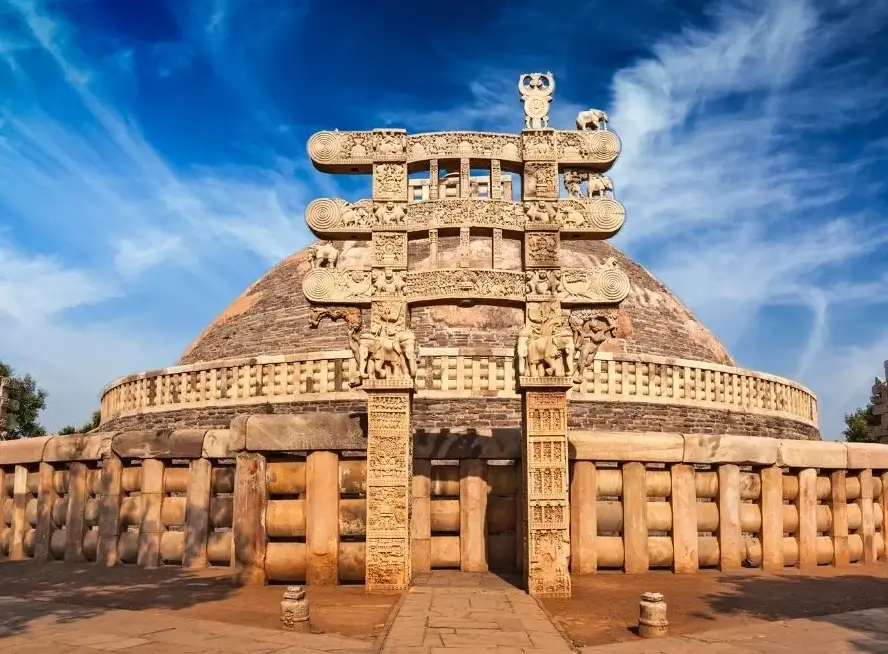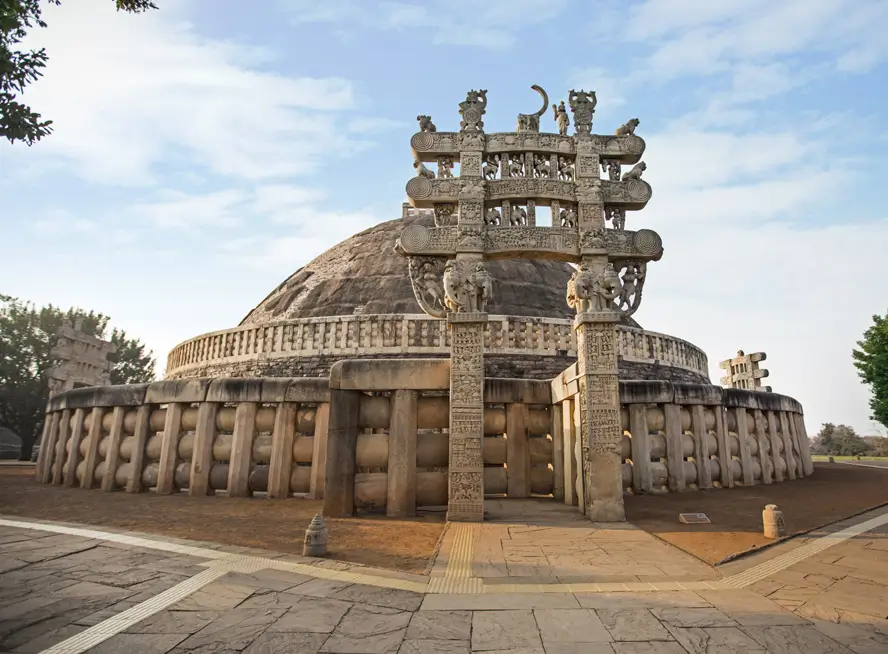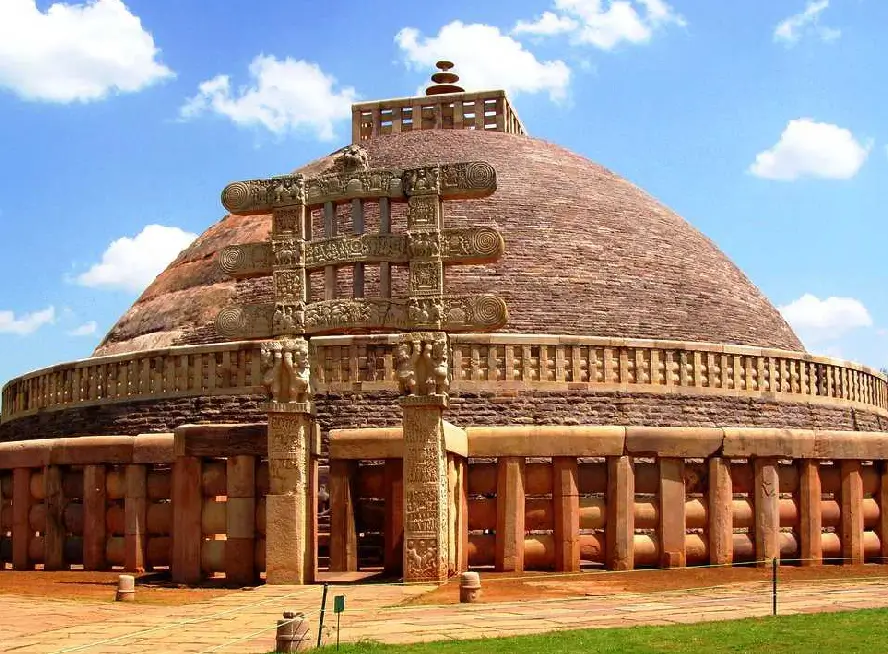Sanchi Stupa, Madhya Pradesh




Sanchi Stupa, Madhya Pradesh
VSanchi, a widely famous city for its greatest stupas, serves as a testament to Ashoka's golden period of Buddhism. Sanchi is a small town in Madhya Pradesh which is highly admired for its countless ancient Buddhist monuments, stupas, temples, monasteries, monolithic pillars and other relics. The religion of Buddhism is highly practiced here as one can get to witness the Great Stupa, also known as Sanchi Stupa. Sanchi Stupa is said to be one of the oldest Buddhist centers in Madhya Pradesh, which stands on a little hill and is an essential attraction in Sanchi tour itineraries. Sanchi Stup[a is a significant location for Buddhists, where they practice religious affairs, meditation, spiritual and physical labor. The Great Stupa is widely known all over the world for its intricate carving styles and tales of Buddha attached to it. One's Buddhist tour will be incomplete without visiting the beautiful monuments of Sanchi.
The Sanchi Stupa, also known as Stupa No. 1, is said to contain the remains of the Gautam Buddha and his followers as mentioned in the history of Sanchi Stupa. The construction of the Great Stupa was built under the supervision of King Ashoka, Queen Devi and their daughter, Vidisha. The huge hemispherical dome is 54-foot-high housing the main structure and a relic chamber below. The sandstone structure is inscribed by Ashoka's Schism Edict and spiraled Brahmi scripts. The square railing on the top of the dome symbolizes heaven and the triple umbrella structure inside the square represents three jewels of Buddhism which include the Buddha, the Dharma, and the Sangha. While making the entrance inside the Stupa, one can see a beautiful Torana, made up of three horizontal stone bars. The dome is surrounded by a Medhi, a pathway used for ritual circumambulation. The stairs are present to reach the Medhi.
The Great Stupa is one of the largest and most notable of the buildings in the historic site of Sanchi. The Sanchi Stupa was named a UNESCO World Heritage site in MP in 1989 and is believed to have been originally constructed in the third century BCE by the Mauryan ruler Ashoka. One can easily find the picture of the Sanchi Stupa on the back side of the Indian currency, Rs. 200, as the Great Stupa symbolizes the significance of India's cultural history.
The site where Stupa 1 is located comprises other significant Buddhist monuments in Sanchi which are Stupa 2, Stupa 3, the Great Bowl, and the Ashoka Pillar. The Stupa 2 and Stupa 3 are believed to be constructed during the Shunga period. The Great Bowl which is also known as the Grand Gumbha is a monolithic stone bowl that was built during the Ashoka Era by carving a huge bowl into the shape of a bowl. The Buddhist monks residing in the monasteries gather here everyday for their meal. They put all food offerings inside the bowl and divide it equally among themselves. The Ashoka Pillar here on the site showcases the Greco-Buddhist architectural style and was a 42-foot-tall pillar. For protection, the pillar's crown is kept at the museum and the bottom part still stands.
For tourists, the best time to visit Budhhist tourist destinations of Sanchi is between November to March, when the weather is quite pleasant and one can easily ignore the high temperatures of summer. It is better to avoid the monsoon season as it makes traveling difficult. The Sanchi Stupa is close to Bhopal city making transportation accessible from any part of the world. One can reach Bhopal by flight and landing at the Raja Bhoj Airport in Gandhi Nagar, Bhopal. The Sanchi Stupa is merely 1.5 kilometers away from the railway station. One can even walk, or hire a local auto, rickshaw and cab to reach the Buddhist religious site.
Timings : 6:30 AM - 6:30 PM
Entry Fees :
- Indians & SAARC Citizens : 30 INR
- Foreigners : 500 INR






















